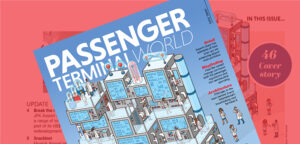In today’s rapidly evolving consumer landscape, the travel industry faces the challenge of staying ahead of emerging trends and meeting evolving customer expectations. From the demand for more streamlined booking processes to the growing preference for digital innovations, the industry must anticipate and adapt to these shifts.
Whether it is pre-ordering and gaining loyalty points with their morning coffee or rectifying a problem with their latest online purchase, today’s consumers not only expect but demand a seamless digital experience as part of their purchasing journeys. However, in its current reality the travel booking experience falls short of meeting these expectations, remaining a fragmented and frustrating experience.
In fact, 40% of surveyed travelers currently cite ‘disconnected experiences’ as their top pain point (Salesforce, 2023). Juggling multiple websites, answering repetitive questions and being bombarded with irrelevant offers are all hurdles in creating a positive and intuitive customer journey.
Travel booking is fragmented
This isn’t just anecdotal. Studies show that travelers can browse up to 38 websites before making a purchase (Expedia, 2013). Furthermore, 88% of travelers wouldn’t hesitate to switch platforms if the buying experience wasn’t convenient and easy (Google, 2016). This fragmented process translates to lost revenue and dissatisfied customers – a scenario the industry can ill afford. Travelers crave transparency, flexibility and control throughout their journeys – something the current landscape struggles to deliver.
Travelers are no longer looking to simply ‘tolerate’ travel but are instead seeking to be enriched by it. The airport itself is no longer just a transit point, with 40% of travelers describing this part of their holiday as enjoyable (British Airways, 2023). For business flyers especially, creating a comfortable and enriching preflight airport experience is a fundamental requirement, with nearly two-thirds counting access to the likes of premium airport lounges as being ‘important’ or ‘very important’ (AviationPros, 2017).
It’s not just luxury lounges that pique the interest. ‘Luxe-for-less seekers’ are on the rise, with 10% of UK travelers planning to upgrade their flights and 14% seeking airport lounge access in 2024 (Skyscanner, 2024). This underscores a shift in value perception as travelers look for premium experiences without breaking the bank.
Connecting the disconnected
An elevated experience comes as much from luxury add-ons as it does from offering a more customer-centric system. This means moving beyond generic offerings and embracing deep personalization. Imagine priority access based on past travel behavior, curated recommendations tailored to specific interests, or exclusive lounge experiences designed to match individual needs.
By leveraging data insights and technology to create more personalized experiences, the impact is not solely in building improved customer satisfaction. Personalization translates into greater business effectiveness, with 80% of surveyed consumers more likely to purchase from a brand that offers personalized experiences (Epsilon, 2018). As Joel Godfrey, digital product director at CAVU, explains, “A well-designed, clean and frictionless customer experience benefits everyone.
If customers can find what they’re looking for and check out easily, they get what they came to us for and we make the sale – it’s a win-win.” When fully realized, this can lead to 10-20% improvements in marketing effectiveness and cost savings, while revenue and retention can see an uplift of up to 30% (McKinsey, 2023).
The whole travel industry is currently standing at a crossroads, with consumers expecting and demanding more and more from a sector that has long been both fragmented and full of friction. CAVU connects the disconnected – elevating travel experiences for customers and unlocking value from the passenger’s journey for the businesses that serve them. By embracing innovation and prioritizing customer-centricity, we can all be part of shaping a brighter future for travel.
This article originally appeared in the April 2023 issue of Passenger Terminal World. To view the magazine in full, click here.


